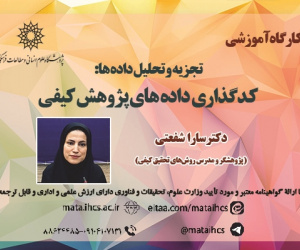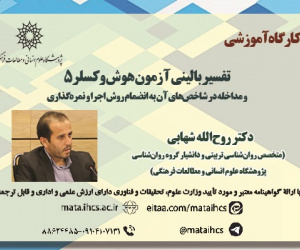مطالعه تطبیقی-کمی وحدت نمادی در بین جوامع و عوامل مؤثر برآن در بازه زمانی 2022-1981 (مقاله علمی وزارت علوم)
درجه علمی: نشریه علمی (وزارت علوم)
آرشیو
چکیده
وحدت نمادی، به عنوان یکی از مقتضیات اساسی نظم اجتماعی که در ادبیات جامعه شناختی با مفاهیم مشابه دیگری نظیر وفاق اجتماعی و ارزشی نیز شناخته شده است، همواره محل بررسی های نظری و تجربی بوده است. نظر به تأثیرات گوناگون وحدت نمادی بر وجوه متفاوت حیات اجتماعی نظیر رشد و توسعه اقتصادی، بی ثباتی اجتماعی و سیاسی، مشارکت سیاسی و انسجام اجتماعی، هدف از انجام تحقیق حاضر، بررسی عوامل مؤثر بر سطح وحدت نمادی جوامع بوده است. مطالعه حاضر با روش تحلیل پانلی داده های مربوط به 89 کشور در بازه زمانی سال های2022-1981، انجام گرفته است. همچنین، مطالعه حاضر، با استفاده از داده های تجمیعی هفت موج پیمایش ارزش های جهانی، شاخص جدیدی را با عنوان "سطح وحدت نمادی" در بازه صفر تا صد برای سال-کشورهای دارای داده ساخته است. یافته ها نشان می دهد که سطح فرامادی گرایی فرهنگ جوامع، بستر لازم برای کاهش سطح وحدت نمادی در جوامع را فراهم می سازد. همچنین، مهاجرت و سطح ارتباطات جهان وطنی جوامع، به سبب گسترش افق ارزشی و ورود ارزش های متفاوت از جوامع دیگر، زمینه ساز ظهور هویت های متفاوت و در نتیجه تضعیف حجم وجدان جمعی به تعبیر امیل دورکیم، یا کاهش سطح وحدت نمادی متعاقب در جوامع می شود. همچنین یافته ها نشان داد که سطح توسعه یافتگی اقتصادی پیشین جوامع، بر سطح وحدت نمادی متعاقب جوامع اثر کاهنده دارد. درمجموع و با توجه به پرپیامدی مسئله وحدت نمادی به عنوان پیش شرط توسعه جامعوی و خطر بالقوه بروز اختلال اجتماعی، بخصوص برای جوامع درحال گذار و شکننده، توجه جدی تر برنامه ریزان و سیاست گذاران فرهنگی به مسئله وحدت نمادی و نظم اجتماعی ضروری می نماید.Comparative-Quantitative Study of Symbolic Unity Among Societies and Its Determinants from 1981 to 2022
Symbolic unity, as one of the basic requirements of social order, which is often used interchangeably with concepts such as social and value consensus in sociological literature, has always been the subject of theoretical and empirical inquiries. Considering the various effects of symbolic unity on different aspects of social life, such as economic growth and development, social and political instability, political participation, and social cohesion, this study aims to investigate the factors affecting the level of symbolic unity in societies. This study was conducted using the panel analysis of data gathered from 89 countries from 1981 to 2020. Further, it proposes a new index called “level of symbolic unity” on a scale of 0 to 100 for country-years with available data, utilizing the World Values Survey (WVS) wave 7 data. The findings suggest that the level of post-materialism in society's culture paves the way for lowering the level of symbolic unity in societies. Additionally, migration and the level of cosmopolitan communication of societies, by expanding the value horizon and introducing different values from other societies, contribute to the emergence of distinct identities and, consequently, weaken the collective conscience, as conceptualized by Emile Durkheim, or reduce the subsequent level of symbolic unity in societies. The results also show that the level of earlier economic development of societies exerts a negative impact on the level of subsequent symbolic unity of societies. In general, given the consequentialism of symbolic unity as a prerequisite for societal development in societies, and the potential risk of social disorder, especially for transitional and fragile societies, cultural planners and policymakers should accord greater attention to the problem of symbolic unity and social order.








